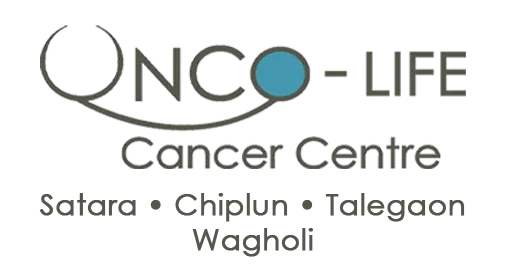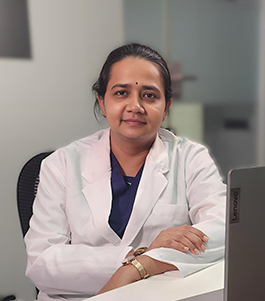Cancer is one of the leading causes of morbidity and mortality worldwide, with millions of new cases diagnosed each year. Understanding the most common types of cancer and their symptoms is crucial for early detection and treatment.
For those seeking expert care, finding a reputable cancer hospital can make a significant difference in the management and outcome of cancer. Onco-Life Cancer Center, a leading cancer hospital in Pune, provides comprehensive cancer care to those looking to navigate this difficult disease.
Here, we explore the most prevalent types of cancer and their associated symptoms.
1. Breast Cancer
Breast cancer is the most common cancer diagnosed in women, but it can also affect men. Early detection through regular screening, such as mammograms, can significantly improve outcomes.
Symptoms:
- A lump or mass in the breast or underarm
- Changes in breast size or shape
- Dimpling or puckering of the skin on the breast
- Nipple discharge or inversion
- Redness or scaliness of the nipple or breast skin
2. Lung Cancer
Lung cancer is the leading cause of cancer death worldwide, primarily affecting smokers, although non-smokers can also develop the disease.
Symptoms:
- Persistent cough that worsens over time
- Chest pain that worsens with deep breathing, coughing, or laughing
- Hoarseness
- Weight loss and loss of appetite
- Shortness of breath
- Fatigue and weakness
- Recurrent infections such as bronchitis and pneumonia
3. Prostate Cancer
Prostate cancer is one of the most common cancers in men, particularly those over the age of 50. Early-stage prostate cancer often has no symptoms, making regular screenings essential.
Symptoms:
- Difficulty urinating or a weak urine stream
- Frequent urination, especially at night
- Blood in the urine or semen
- Erectile dysfunction
- Pain in the hips, back, or pelvis
4. Colorectal Cancer
Colorectal cancer affects the colon and rectum and is one of the leading causes of cancer-related deaths. Regular screening through colonoscopies can help detect and remove precancerous polyps.
Symptoms:
- Changes in bowel habits, including diarrhoea or constipation
- Blood in the stool
- Abdominal discomfort or cramping
- Unexplained weight loss
- Fatigue and weakness
5. Skin Cancer
Skin cancer is the most common type of cancer in the United States, with melanoma being the deadliest form. Protecting the skin from UV radiation is crucial in preventing skin cancer.
Symptoms:
- New growths or sores that do not heal
- Changes in existing moles, such as size, shape, or colour
- Itchy or tender lesions
- Moles with irregular borders or multiple colours
6. Bladder Cancer
Bladder cancer is more common in men than women and is often diagnosed at an early stage. Smoking is a significant risk factor for bladder cancer.
Symptoms:
- Blood in the urine
- Frequent urination
- Painful urination
- Lower back pain
7. Non-Hodgkin Lymphoma
Non-Hodgkin lymphoma is a cancer of the lymphatic system and can occur at any age. It encompasses a diverse group of blood cancers.
Symptoms:
- Swollen lymph nodes in the neck, armpit, or groin
- Fever and night sweats
- Weight loss and loss of appetite
- Fatigue
- Abdominal pain or swelling
8. Kidney Cancer
Kidney cancer, also known as renal cancer, typically affects adults over 50. It often goes undetected until it has spread to other parts of the body.
Symptoms:
- Blood in the urine
- Persistent back or side pain
- Unexplained weight loss
- Fatigue
- Intermittent fever
9. Pancreatic Cancer
Pancreatic cancer is one of the deadliest cancers due to its aggressive nature and late detection. It often spreads quickly to nearby organs.
Symptoms:
- Jaundice (yellowing of the skin and eyes)
- Dark urine
- Itchy skin
- Abdominal and back pain
- Weight loss and loss of appetite
- Nausea and vomiting
10. Leukemia
Leukemia is a cancer of the blood-forming tissues, including the bone marrow and lymphatic system. It leads to the overproduction of abnormal white blood cells.
Symptoms:
- Fever and chills
- Persistent fatigue and weakness
- Frequent infections
- Unexplained weight loss
- Swollen lymph nodes
- Easy bruising or bleeding
Conclusion
Understanding the symptoms of the most common types of cancer can aid in early detection and treatment. If you or a loved one are experiencing any of these symptoms, seeking prompt medical attention is crucial. At Onco-Life Cancer hospital , we offer comprehensive cancer care, from diagnosis to treatment, with a team of dedicated specialists committed to providing the best possible outcomes for our patients. Early detection and timely intervention can significantly improve the prognosis of cancer. For more information or to schedule a consultation, visit our website or contact us today.
Frequently Asked Questions
Blog – Types of Cancer and Their Symptoms
What Are The Earliest Symptoms Of Breast Cancer?
Common early signs include a new, persistent breast or underarm lump, skin dimpling or puckering, nipple inversion or discharge (especially bloody), a change in breast size or shape, or a patch of redness, thickening, or scaliness. Most breast pain isn’t cancer, but any new change that lasts more than a few weeks deserves prompt clinical evaluation and imaging.
Can Men Get Breast Cancer And What Are Their Symptoms?
Yes. Male breast cancer is uncommon but possible. Watch for a firm, painless lump beneath the nipple, nipple inversion, scaling or ulceration of the nipple–areola complex, bloody or clear discharge, and underarm swelling from enlarged nodes. Because men have less breast tissue, changes may be more noticeable—seek medical assessment early rather than “watching and waiting.”
How Do Lung Cancer Symptoms Differ From Other Respiratory Illnesses?
A cold or bronchitis usually improves within two to three weeks. Lung cancer symptoms often persist or progress: a chronic cough, coughing blood, unexplained weight loss, chest pain, hoarseness, shortness of breath, or recurrent pneumonia in the same area. New or worsening symptoms in smokers or high-risk individuals warrant a chest X-ray/CT and specialist review, even if infections seemed frequent earlier.
Are All Lumps In The Body Cancerous?
No. Many lumps are benign—lipomas (fatty), cysts, reactive lymph nodes, or fibroadenomas. Concerning features include a hard, fixed, enlarging, or painless mass; associated skin changes; unexplained weight loss; night sweats; or persistent fever. Any lump that doesn’t settle within two to four weeks—or grows—should be examined by a clinician, who may order imaging or a needle biopsy.
How Often Should I Get Screened For Prostate Cancer In India?
India doesn’t run a routine national PSA screening program. Screening is individualized after counselling about benefits and risks. Many clinicians consider a baseline PSA and digital rectal exam around age 50 (earlier at 45 for high-risk: family history, African ancestry), with repeat testing every 1–2 years depending on initial values and risk profile. Discuss a personalized plan with your urologist.
Can Lifestyle Changes Reduce My Cancer Risk Even If I Have A Family History?
Yes—while genes matter, behavior shifts still lower risk. Don’t smoke, limit alcohol, maintain a healthy weight, and exercise at least 150 minutes weekly. Emphasize a plant-forward diet, minimize processed/red meats, and practice sun protection. Keep vaccinations up to date (HBV, HPV), manage exposures at work, sleep adequately, and attend age-appropriate screenings. Lifestyle can’t eliminate risk, but it reliably reduces it.


